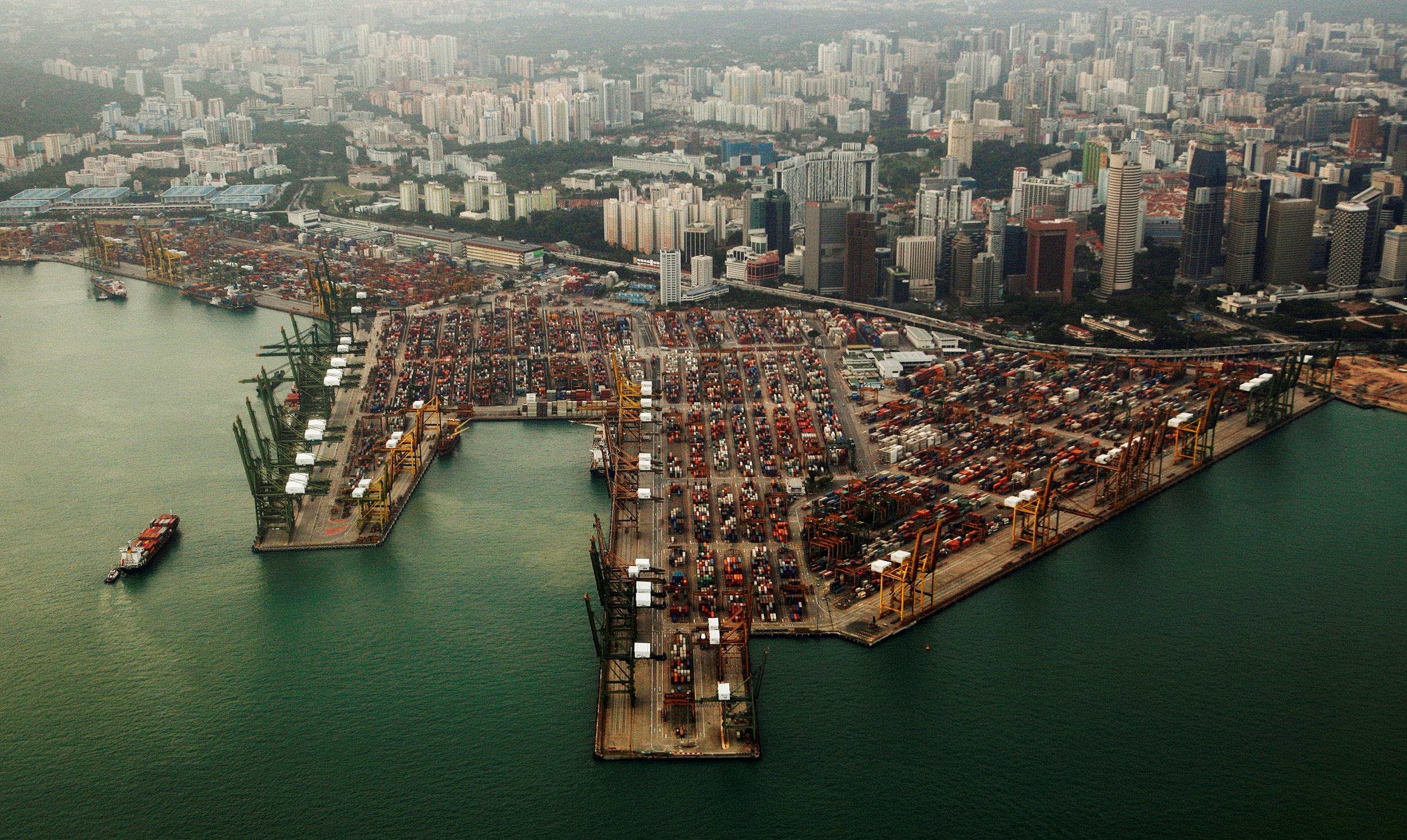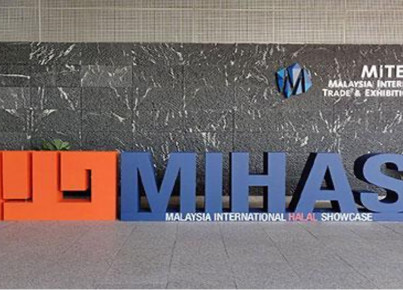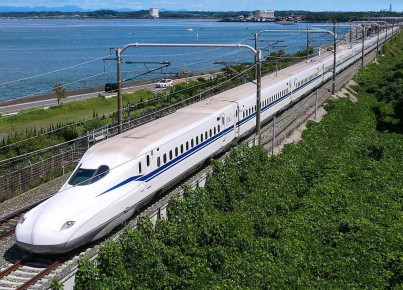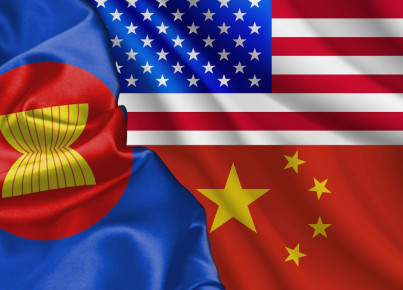The sea is the natural space for globalisation. The majority of goods moves by cargo ships. Efficiency in handling containers, combined with strategic location and economic-political relations, makes the ports of East Asia the busiest in the world. Among the 50 most active ports worldwide, nine are in ASEAN and 18 in China.
For those who do not know which port to steer into, no wind is good. Although this aphorism of Seneca comes from a ‘moral epistle’, we could return the metaphor to its original context – navigation – and draw a new lesson from it. Today, global maritime trade responds to partly different rationales than in the days of the Roman Mare Nostrum. While environmental conditions (wind, currents, distance of the sea voyage) affect colossal container ships less, the choice of ports remains essential for those who must design trade routes. And the sea is still the main trade route for goods: according to EU data, more than 50 percent of its external trade moved by ship in 2021. Another interesting fact is that, in the ranking of the world's top 50 ports, 18 are Chinese (the first is Shanghai and six other Chinese ports occupy the top ten), nine are in ASEAN countries (the second worldwide is Singapore) and seven are European.
It is no surprise that Asian ports are so numerous in the ranking. The title of 'factory of the world' can now be awarded not only to China, but to much of the continent as well. The dragon is joined by a growing group of tigers. According to the UNCTAD, in 2021 Asian ports discharged and loaded 64% and 42%, respectively, of all world goods per ton. It is interesting to note that in Asia, as well as in Europe (including Russia), more goods are discharged (thus imported) than loaded (exported). This figure should be accompanied by another recent trend in shipping. In 2015, developing countries in Asia were exporting more tons of goods than they were importing, while the opposite case was in developed countries. Data from 2021 show that this ratio has reversed. According to the UNCTAD again, this change can be explained in light of the fact that merchant ships are increasingly carrying dry cargo in containers instead of tanker cargo (goods 'in tanks', such as refined petroleum products, chemicals, and gas). Whereas, in the 1970s, more than half of sea trade was made of tanker cargo – thus, largely by raw materials and low-processing products –, today, three-quarters is made of dry cargo, a much broader category that includes, inter alia: minerals, components, advanced machinery, consumer products...
Asian and European economies, therefore, seem hungry for products for their own domestic consumption and, more importantly, to turn them into other, more advanced goods to export. In the ASEAN, Singapore stands out as a major world port, following a destiny already charted during the British colonial rule. In 1819, Sir Thomas Stamford Raffles purchased the island from the Sultan of Johore to establish a settlement and compete, from a strategic position, with the nearby port of Malacca, under Dutch control, for the Straits trade. Shortly after the purchase, Raffles wrote: The Port of Singapore is a free port, and the trade thereof is open to ships and vessels of every nation, equally and alike to all. Raffles is remembered positively in the Lion City and is considered the founder of modern Singapore rather than an agent of colonial domination. In addition to determining the commercial vocation of the future city-state, he is credited with the first urban and infrastructure plan to open the island to international trade. The intuition of Raffles and the British, in whose wake Lee Kuan Yew, the first leader of independent Singapore, also moved, and the island's strategic location represent the roots of the port's success. However, it is more recent industrial policy choices that have consolidated its fortunes: the port infrastructure continues to be enlarged and modernised. Over the next two decades, work on the expansion of the Tuas 'mega port' will continue, following a four-phase project. The first phase alone, completed in 2021, cost $1.76 billion. The port can also rely on good governance, based on public-private partnerships, and Singapore's wide network of free trade agreements, including one with the EU.
Next on the list of the world's top 50 ports are Malaysia's Port Klang (12th place) and Tanjung Pelepas (19th), both on the Straits of Malacca. They are followed by the Thai port of Laem Chabang (20th) and Jakarta's Tanjung Priok (23rd). In Vietnam, the Ho Chi Minh region is served by the city's port on the estuary of the Mekong (26th) and the port of Cai Mep (50th), while the industrial district of Hanoi relies on the port of Hai Phong (33rd). Finally, the Philippine capital Manila ranks 31st. The main reason for the success of ports in the ASEAN and the rest of East Asia lies in the efficiency with which port infrastructure is able to load and discharge containers from ships and transfer them to another vessel or mean of transport, as revealed by the Global Container Port Performance Index (CPPI) curated by the World Bank. Logistical efficiency can make a port a major hub of trade even if its 'inland' economy plays a relatively small role in the global economy or manufacture (as for Singapore). Moreover, companies might move their goods through another country's port, if its national ports, even when geographically close, are not as punctual and reliable time-wise. In conclusion, it almost seems that ‘knowing which port to steer to’ is more important than having ‘good wind in your sails’, that is, reaching the nearest port. In light of this consideration, we can also read the data on EU ports. In the world ranking, the three ports of Rotterdam (10th place), Antwerp (14th) and Hamburg (18th), all three on the North Sea and located on a river, stand out. These three cities represent the main trade route between the European ‘blue banana’ and the rest of the world. In addition to efficiency, a factor that increasingly influences companies' choice of ports is sustainability: reducing emissions from transportation is a necessary step in achieving the carbon neutrality of the supply chain. Antwerp, for example, is a ‘sustainable port’ recognised at the international level. And in the Mediterranean? Interesting cases appear in the ranking, e.g. Athens’ Piraeus (28th place) and the Spanish cities of Valencia (30th) and Algeciras (34th). Piraeus owes its importance to trade with Asia and is at the centre of a delicate political issue since, in China's plans, it should become the end point in Europe for its Belt and Road Initiative. Algeciras, on the other hand, in addition to its strategic location on the Strait of Gibraltar, can boast of being the top European port in terms of efficiency, according to the aforementioned World Bank CPPI ranking. Italy and France ports are absent from the top 50. Although the Mediterranean is still at the centre of global maritime traffic, Italian ports should modernise their infrastructure and strengthen their logistics in order to compete with other global ports.






